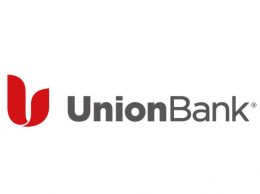EDITOR’S NOTE: This is one part in a three-part package on Union Bank’s acquisition of Pacific Capital Bancorp, the parent of Santa Barbara Bank & Trust. Read the other two stories here:
- “End of an era for SBB&T brand.” A look back at the 52-year history of a company that enjoyed exceptional customer and shareholder loyalty.
- Recession, mergers and the future of finance. Pacific Capital was the last large independent banking firm in the region.
As the historic Santa Barbara Bank & Trust name rides off into the sunset, the region’s mid-sized community banks are each vying for the chance to emerge as the dominant player in the Tri-Counties.
The Texas billionaires who bought Pacific Capital Bancorp, the parent of Santa Barbara Bank & Trust, two years ago announced on March 12 that they would sell to San Francisco-based Union Bank in a $1.5 billion deal — by far the largest banking transaction in the region’s history.
The deal would rebrand the 52-year-old Santa Barbara Bank & Trust franchise as Union Bank and create a foothold for the San Francisco lender to enter the Central Coast.
Union Bank has “346 branches in California but none from Solvang to Thousand Oaks,” Vice Chairman Tim Wennes told reporters at a March 12 press conference.
All of that changes with the purchase, which would add 31 tri-county branches to Union’s existing nine, potentially making it the third-largest banking presence in the region, behind Wells Fargo and Rabobank.
Under the proposed deal, Union will pay $46 per share for Pacific Capital, a 60 percent premium over its recent price in the $28 per share range. A quiet winner in the deal is the U.S. Treasury, which will cash out its shares for roughly $160 million, or about 90 percent of the money it put into Pacific Capital under the Troubled Asset Relief Program.
“This was a wonderful deal for shareholders and melancholy and bittersweet for us,” said Carl Webb, a partner in Dallas-based Ford Financial Fund, which paid $500 million to recapitalize and buy controlling ownership of Pacific Capital in August 2010.
The Ford team had planned to use Santa Barbra Bank & Trust as an acquisition platform after returning it to profitability, but those plans were apparently shelved when Union Bank’s unsolicited offer came along. “We had identified 10 banks on the coast from L.A. to the South San Francisco Bay Area for acquisitions with a program beginning in the next six months,” Webb said. “Union Bank caught us when they could catch us.”
The acquisition is Union Bank’s biggest, dwarfing its $307.4 million purchase of Jackson Federal Bank in 2004, according to data compiled by Bloomberg News.
The proposed acquisition presents a “strategic fit” that “meets Union Bank’s desire to grow its consumer and business banking presence on California’s Central Coast,” Wennes said. Union plans to ramp up its private banking, wealth management and small-business lending in its new footprint, he said.
The deal is expected to close by the end of the year and the rebranding of the Santa Barbara Bank & Trust branches as Union would likely occur in the first quarter of 2013.
Webb said Santa Barbara Bank & Trust’s value lies in its community roots. “We are where we are today — with a successful turnaround completed in a very short period of time — because of our people and our customers. That speaks to the uniqueness of the franchise. The more I was around the market, the closer I saw the linkage between the bank and the community,” Webb told the Business Times on March 12. “My message to Union Bank was ‘handle with care.’ ”
Vying for top spot
Union Bank’s biggest test will be to retain loyal customers after it pulls down the Santa Barbara Bank & Trust signs, several industry insiders said. That’s because much of the value of the brand lies in its name — some of its shareholders have been with the company since the 1970s, and the Santa Barbara connection brings with it the caché of a wealthy coastal enclave.
“[Union Bank’s] challenge now is to hang onto the business they have bought,” said Marshall Milligan, who was president of Bank of A. Levy in Ventura County when it sold to First Interstate Bank for $86.5 million in 1994. “Customers of local banks tend not to like being ‘bought’ and often move, sooner or later, to other local banks rather than stay with the acquiring bank,” he said via email.
But if it can retain customers, Union has done a good deal, said Milligan, who banks with Santa Barbara Bank & Trust. “If they can hang onto a large portion of what they’ve bought, Union Bank is a winner for picking up a strong set of branches in an area they did not previously cover.”
Milligan, also a former Montecito Bank & Trust Board member, said that privately held bank “could be the likely heir to many of the customer relationships that prefer a local bank.”
Janet Garufis, the president and CEO of Montecito Bank & Trust, said the loss of the Santa Barbara Bank & Trust name marks “the end of an era.”
“People in the community are very sad about this,” she said. “It’s the loss of a great community institution.”
The players
Among the independent community banks in the region, Montecito Bank & Trust recently surpassed the billion-dollar mark for assets, officially becoming a “big bank” in the eyes of regulators. It is still far behind the $5.8 billion in assets at Pacific Capital. It celebrated its 37th anniversary on March 17, announcing a series of grants to area nonprofits.
“Union Bank is a very, very good bank,” Garufis said. “But it’s a very different bank from Santa Barbara Bank & Trust.” Union Bank parent company UnionBanCal has assets of nearly $90 billion. It is a unit of Japan-based Mitsubishi UFJ Financial Group, a multinational banking company whose stock trades on the New York Stock Exchange.
“When you look at the banking landscape and you say ‘Who is the community bank in the market who has the most capacity and has the most history?’ Montecito Bank & Trust is the name that’s going to fill that tradition,” Garufis said.
From multinationals to local business banks, financial institutions are positioning themselves on the new playing field. Here’s a closer look at some key players:
• Wells Fargo will continue to have the largest bank network in the region after the deal, with 47 locations in the Tri-Counties. Asked for comment, its regional executive, Reza Razzaghipour, would not speak directly to the Union Bank deal but said in a statement that Wells Fargo remains committed to the region.
• At Rabobank, which acquired Mid-State Bank & Trust in the second-largest bank merger on record for the Tri-Counties, regional president Steven Harding said his bank has shared a similar footprint with Santa Barbara Bank & Trust. Netherlands-based Rabobank has 43 branches in the Tri-Counties, making it the second-largest bank in the region by number of locations. Union Bank would jump ahead of Bank of America to be No. 3 on the list.
• First California Financial Group, the Westlake Village-based parent company of First California Bank, has 19 branches, seven of which are in the Tri-Counties. After Union buys Pacific Capital, First California would be the largest regionally based bank in the Tri-Counties as ranked by assets, with $1.8 billion. It has been active in recent years, buying three failed banks after the financial crisis and announcing earlier this year that it has plans to open its first Santa Barbara County branch in downtown Santa Barbara.
CEO and President C.G. Kum said he welcomes the competition that Union Bank brings to the table. “What it means is that we’re going to have a very strong and capable bank entering the market, which means the marketplace is going to be more competitive,” he said. “All the local banks, including us, are going to have to be at the top of our game.”
• Paso Robles-based Heritage Oaks Bancorp is currently the fourth-largest bank based in the Tri-Counties, with $982 million in assets. The majority of its 13 branches are in San Luis Obispo County, but it maintains its Business First Bank division in downtown Santa Barbara. President and CEO Simone Lagomarsino said the Union Bank buy isn’t going to change Heritage Oaks’ game plan, which includes expansion into Ventura County.
• Mission Community Bancorp, based in San Luis Obispo, has been vocal about its plan to build a large banking franchise, or “super-regional community bank” along the tri-county coast. After injecting $25 million into the bank in 2009, bank investor group Carpenter Fund Manager brought banking veteran Jim Lokey out of retirement to head up its expansion plans.
“We see our natural territory as the four-county region from Ventura to Monterey County,” Lokey told the Business Times in July 2011. Mission acquired struggling Santa Lucia Bancorp last fall in a deal that doubled its assets to $455 million. Lokey was one of the executives at the head of Arroyo Grande-based Mid-State Bank & Trust when it was sold to Rabobank in 2007 for $857 million.
Employees likely to stay
Carroll Pruett, another former Mid-State Bank executive who is now retired, told the Business Times that keeping clients through a name change isn’t an impossible task, if customer relationships are preserved.
“It wasn’t as difficult as we thought it would be to transition, mainly because Rabobank was very good about maintaining staff and personnel and not closing too many locations,” he said.
George Leis, Pacific Capital’s president, said most of the customer-facing employees of the bank would keep their jobs after the deal. Wennes and Leis declined to say how much of upper management could be expected to keep their positions.
Pacific Capital had 1,078 employees in the Tri-Counties as of December, according to Business Times records. Whether the new operation would continue to be run out of downtown Santa Barbara as a regional hub for Union or whether it would be managed from Los Angeles also remains to be seen.
After the Ford acquisition, Pacific Capital rebranded all of its banks, which had included First Bank of San Luis Obispo and San Benito Bank, under the Santa Barbara Bank & Trust name. Those banks will now have to undergo yet another name change. In the northern areas of Santa Barbara Bank & Trust’s footprint, “that’s probably just too much customer interruption,” Pruett said. “If you’re ever thinking about changing, that’s when a customer leaves you. It will probably have a negative effect in that area.”
Pacific Capital also recently completed a $40 million technology upgrade that include new Automated Teller Machines and an overhaul of its back-end accounting systems. Leis said the upgrade was not a wasted effort and will make the transition to Union Bank’s computing systems easier.
$1 billion richer
Union Bank is paying an exceptionally high premium to enter the Central Coast market, said George Tharakan, chief investment officer with Santa Barbara-based wealth management firm Alamar Capital.
“Based on my calculations, Union Bank paid over two times tangible book value, or over 25 percent of assets, for Pacific Capital,” he said in a note emailed to the Business Times. “I am not aware of any transaction in recent years where the buyer paid such a high premium.”
He noted that the Ford team, which owns about 75 percent of Pacific Capital, converted its original $500 million investment into $1.1 billion in the space of 18 months. “Kudos to Ford and the entire management team of Pacific Capital for generating a not too shabby 125 percent return on their brief investment,” Tharakan said.
For Webb and business partner Gerald Ford, turning banks around for hefty premiums is nothing new. The partners purchased their first bank in 1975 for $1.2 million and later sold it for $100 million. The two went on to make their fortunes in the aftermath of the savings and loans crisis, including scooping up a handful of California banks to assemble Golden State Bancorp, parent company of the CalFed system, which they sold to Citigroup in 2002 for $6 billion.
After the financial crisis hit in 2007, the Ford fund again started looking for new opportunities to buy a struggling bank that could be recapitalized. Just such an opportunity came along in Pacific Capital, a bank with a loyal deposit base and 52-year history in the region that was dangling on the edge of regulatory failure after the financial crisis. In the first few months of ownership, the Ford team had done the dirty work of cleaning up the bank’s balance sheet, which was bogged down with bad real estate loans, and returned the company to profitability. Pacific Capital reported $75 million in earnings last year.
After buying the bank, the Ford team spoke candidly about its plans to build out the Santa Barbara Bank & Trust franchise along the coast.
“The Central Coast is a very special area, and Santa Barbara is ground zero,” Webb said March 12. “It’s resilient, has a diverse mix of business and came through the recession better than most. If we had continued to be independent, Ventura would have been our first target for acquisitions. If we had made three or four we could easily have doubled in size.”
Expecting to be more than a billion dollars richer by the end of the year, the Ford team will look for new opportunities among hard-hit banks in the Midwest while keeping an eye on the West Coast. “We have closed our second fund and we are going to recycle our capital from SBB&T. It’s all we know how to do: Buy federally-insured institutions. We like to buy troubled banks and apply the SBB&T architecture to turn them around,” he said. “We have an affinity for California, notwithstanding all the issues of doing business in the state. We are creatures of habit.”
— Editor Henry Dubroff contributed reporting.






 Print
Print Email
Email


















Like Marshall Milligan said most SBBT customers will leave. I was a B of A. Levy customer for over 40 years and did not like it when they sold to 1 interstate. I went to SBBT. Now I will look at moving to Montecito. Or maybe start a new local bank, lots of local store fronts are vacant.